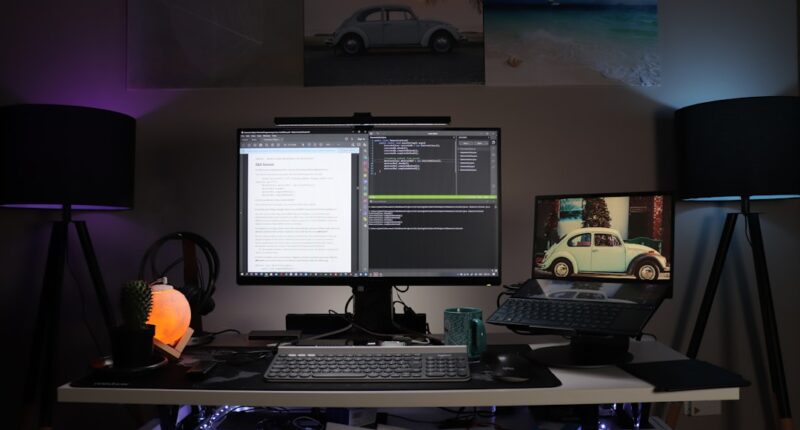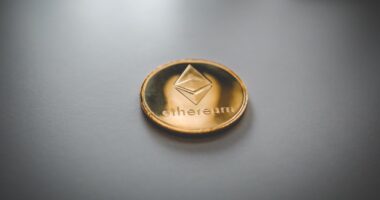NFTs, or non-fungible tokens, are digital assets that represent ownership or authenticity of unique items or content using blockchain technology. Unlike fungible cryptocurrencies such as Bitcoin or Ethereum, NFTs are non-interchangeable, with each token being distinct. This characteristic makes NFTs suitable for representing digital collectibles, including art, music, videos, and other creative content.
NFT collectibles encompass various forms, such as digital art, virtual real estate, in-game items, tweets, and memes. Each NFT is recorded on a blockchain, a decentralized digital ledger that documents transactions across a computer network. This system ensures secure and immutable recording of NFT ownership and provenance, preventing alteration or duplication.
The unique properties of NFTs have made them a popular method for creators to monetize digital works and for collectors to acquire and trade exclusive digital assets. This technology has opened up new possibilities in the digital economy, allowing for verifiable ownership and scarcity in the digital realm.
Key Takeaways
- NFT collectibles are unique digital assets that are stored on a blockchain and cannot be replicated or replaced.
- The rise of NFTs in the digital art world has revolutionized the way artists can monetize and sell their work, bypassing traditional art market barriers.
- Buying and selling NFT collectibles involves using cryptocurrency to purchase and trade digital assets on various NFT marketplaces.
- NFT collectibles have the potential to hold significant long-term value, as they are scarce and have a provenance that can be traced on the blockchain.
- The future of NFT collectibles in the digital marketplace is promising, with potential for expansion into various industries beyond art and collectibles.
The Rise of NFTs in the Digital Art World
New Opportunities for Artists
One of the most famous examples of NFT art is “Everydays: The First 5000 Days” by digital artist Beeple, which sold for $69 million at auction. This groundbreaking sale brought mainstream attention to the potential of NFTs in the art world and sparked a surge of interest from artists, collectors, and investors.
Addressing Concerns and Protecting Creations
The ability to prove ownership and authenticity of digital art through NFTs has also addressed concerns about copyright and intellectual property rights in the digital space, making it easier for artists to protect and profit from their creations.
Blurring Boundaries and New Frontiers
The rise of NFTs in the digital art world has also led to collaborations between traditional artists and digital creators, as well as the emergence of new platforms and marketplaces dedicated to NFT art. As a result, the boundaries between physical and digital art have become increasingly blurred, opening up new opportunities for artists to explore and innovate in the digital space.
How to Buy and Sell NFT Collectibles

Buying and selling NFT collectibles involves several steps, but the process is relatively straightforward once you understand the basics. The first step is to choose a digital wallet that supports NFTs and cryptocurrency transactions. Popular options include MetaMask, Trust Wallet, and Coinbase Wallet.
Once you have set up your wallet, you will need to fund it with cryptocurrency such as Ethereum, which is the most commonly used currency for buying and selling NFTs. After funding your wallet, you can browse NFT marketplaces such as OpenSea, Rarible, or Foundation to find NFT collectibles that interest you. When you find an NFT you want to purchase, you can place a bid or buy it outright using your digital wallet.
Once the transaction is complete, the NFT will be transferred to your wallet, and you will become the owner of the digital collectible. If you want to sell an NFT collectible, you can list it on a marketplace and set a price or auction for it. Once a buyer purchases your NFT, the transaction will be completed, and the ownership will be transferred to the new owner.
It’s important to note that buying and selling NFTs may involve transaction fees and gas fees, which can vary depending on the platform and network activity.
The Potential Value of NFT Collectibles
The potential value of NFT collectibles is a topic of much debate and speculation in the digital marketplace. While some NFTs have sold for millions of dollars, others have struggled to find buyers or maintain their initial value over time. The value of an NFT collectible is influenced by several factors, including the reputation of the creator, the scarcity and uniqueness of the item, the demand from collectors, and the overall market trends.
For artists and creators, NFTs offer a new way to monetize their work and generate income from digital art that may have been undervalued or overlooked in traditional art markets. Collectors are drawn to NFTs for their potential as investments and as a way to own unique digital assets that can appreciate in value over time. The speculative nature of NFTs has also attracted attention from investors and speculators looking to capitalize on the growing interest in digital collectibles.
As with any investment, there are risks involved in buying and selling NFT collectibles, and it’s important for collectors to do their research and consider their own risk tolerance before making any purchases. While some NFTs have proven to be lucrative investments, others have experienced significant price volatility and uncertainty. As the market for NFTs continues to evolve, it’s likely that we will see new trends and opportunities emerge that could impact the potential value of digital collectibles.
The Future of NFT Collectibles in the Digital Marketplace
The future of NFT collectibles in the digital marketplace is filled with potential and possibilities. As blockchain technology continues to advance and become more widely adopted, we can expect to see new innovations in how NFTs are created, bought, sold, and traded. This could include improvements in scalability, interoperability between different platforms, and enhanced security features to protect the integrity of digital assets.
The integration of NFTs into virtual reality (VR) and augmented reality (AR) experiences is another exciting development that could shape the future of digital collectibles. Imagine being able to display your NFT art collection in a virtual gallery or showcase your virtual real estate holdings in an immersive VR environment. These types of experiences could open up new avenues for creators to engage with their audiences and for collectors to interact with their digital assets in meaningful ways.
In addition to art and entertainment, NFTs have the potential to disrupt other industries such as gaming, music, fashion, and sports. We are already seeing examples of athletes releasing NFT collectibles tied to memorable moments in their careers, musicians launching exclusive music releases as NFTs, and fashion brands exploring digital ownership of virtual clothing and accessories. These developments point to a future where NFTs play a central role in how we consume and interact with digital content across various domains.
NFT Collectibles and Blockchain Technology

Authenticity and Ownership
Blockchain technology provides a secure way to prove ownership and provenance of NFTs through cryptographic signatures and smart contracts. Each NFT is uniquely identified on the blockchain, making it easy to verify its authenticity and transfer ownership without the risk of fraud or duplication.
Benefits for Creators
The use of blockchain technology also benefits creators, as they can receive automatic royalties when their NFTs are resold on secondary markets. This provides them with ongoing income from their work, ensuring that they are fairly compensated for their creations.
The Future of Blockchain Technology
As blockchain technology continues to evolve, we can expect improvements in areas such as energy efficiency, transaction speed, and environmental sustainability. These advancements will address current criticisms around the environmental impact of blockchain networks, shaping the future of NFT collectibles in the digital marketplace.
Tips for Collecting NFTs and Building a Digital Collection
For those interested in collecting NFTs and building a digital collection, there are several tips to keep in mind to make informed decisions and maximize your experience: 1. Research: Take the time to research different artists, platforms, and marketplaces to understand the variety of NFT collectibles available. Look for creators whose work resonates with you and consider factors such as scarcity, historical sales data, and community engagement.
2. Diversify: Consider diversifying your collection across different types of NFTs, such as art, virtual real estate, virtual goods, or other forms of digital content. Diversification can help mitigate risk and expose you to a range of creative expressions.
3. Engage with the Community: Join online communities, forums, and social media groups dedicated to NFT collecting to connect with other enthusiasts, learn from their experiences, and stay informed about new developments in the space. 4.
Understand the Risks: Be aware that investing in NFTs carries inherent risks due to market volatility and uncertainty. Only invest what you can afford to lose and consider seeking advice from financial professionals if needed. 5.
Stay Informed: Keep up with news and trends related to NFTs and blockchain technology to stay informed about potential opportunities or challenges that may impact your collection. By following these tips and staying engaged with the evolving landscape of NFT collectibles, you can build a digital collection that reflects your interests while navigating the exciting world of digital ownership and creativity.
If you’re interested in learning more about the world of NFT collectibles, be sure to check out the latest article on ETH News. This website is a valuable resource for staying up to date on all things related to Ethereum and blockchain technology. Whether you’re a seasoned collector or just getting started, ETH News has the information you need to discover the treasure trove of digital assets today.
FAQs
What are NFT collectibles?
NFT collectibles are digital assets that are unique and cannot be replicated. They are stored on a blockchain, which ensures their authenticity and ownership.
How do NFT collectibles work?
NFT collectibles are created and stored on a blockchain, which is a decentralized digital ledger. Each NFT has a unique digital signature that proves its authenticity and ownership.
What can NFT collectibles be used for?
NFT collectibles can be used for various purposes, including digital art, virtual real estate, in-game items, and digital fashion. They can also be bought, sold, and traded like physical collectibles.
How do I buy NFT collectibles?
NFT collectibles can be purchased on various online platforms that specialize in digital assets. Buyers typically use cryptocurrency to make the purchase.
Are NFT collectibles a good investment?
The value of NFT collectibles can fluctuate, so they can be a risky investment. However, some NFTs have sold for significant amounts of money, making them potentially lucrative investments.
What are the risks of buying NFT collectibles?
The main risks of buying NFT collectibles include market volatility, potential for fraud, and the possibility of the digital asset losing value over time. It’s important for buyers to do thorough research before making a purchase.





